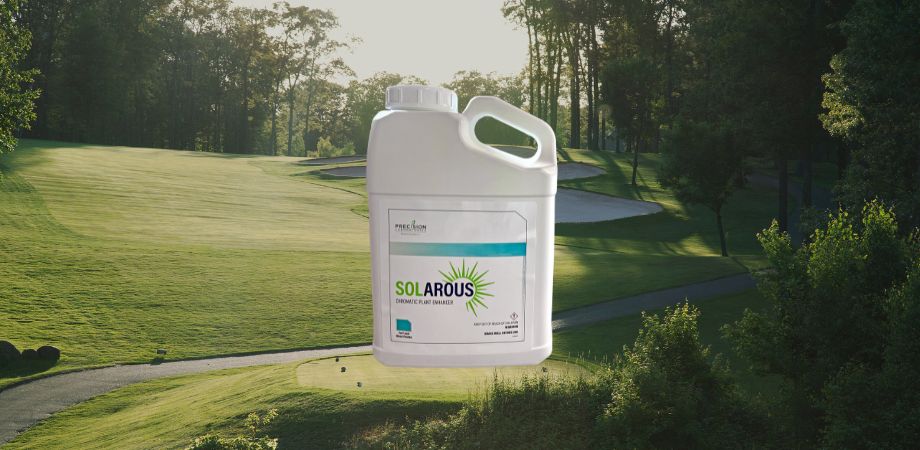This time of year, many golf courses become home to some unwanted visitors: crabgrass and goosegrass. Both are annual weeds that germinate in the spring and thrive in the heat of summer. They do best in sparse turfgrass that is mowed short, which is why greens are especially susceptible. The weeds find plenty of room to grow and soak up the sun in this close-mown turf.
Crabgrass and goosegrass are similar, but there are some distinct differences in their appearance. Crabgrass is light green in color, while goosegrass is darker green with a white center. Goosegrass is also known as silver crabgrass because it has a silver tint. It also has a distinct seedhead that resembles a zipper. Lastly, goosegrass stems are flatter than crabgrass stems.
Cultural practices and pre-emergent herbicides can help minimize these weeds, but this point in the season calls for curative solutions. The good news is that there are many post-emergent options for crabgrass and goosegrass, some of which are labeled for both.
Crabgrass and Goosegrass
If you need to treat both crabgrass and goosegrass at the same time, consider Pylex. You can use Pylex to treat crabgrass and goosegrass in some warm-season turfgrasses in addition to cool-season turfgrasses. However, it is not labeled for use on golf course greens or collars.
Another multi-use option is Acclaim Extra, which is formulated exclusively for crabgrass and goosegrass. You can use Acclaim Extra on most cool-season grasses and zoysiagrass.
For other warm-season grasses, consider Tribute Total. It controls both crabgrass and goosegrass on bermudagrass and zoysiagrass. However, its label excludes greens and overseeded tees.
Crabgrass Only
If you only need to control a crabgrass invasion, you have other post-emergent herbicide options. Active ingredients that kill crabgrass include quinclorac and mesotrione.
Drive XLR8 is a quinclorac product specific to cool-season turf. Quinclorac works well on mature crabgrass but will likely require multiple applications. Like others, Drive XLR8 is not labeled for use on golf course greens or collars.
Mesotrione can treat crabgrass in warm- and cool-season turfgrasses. ArmorTech Trione is labeled for use on cool-season grasses and St. Augustinegrass. For effective post-emergent crabgrass control, it’s best to make multiple applications two to three weeks apart.
Another crabgrass control product for warm-season turf is Dismiss NXT, which contains carfentrazone-ethyl and sulfentrazone. Dismiss is only labeled for golf course fairways and roughs.
Goosegrass Only
Revolver is labeled for goosegrass control in bermudagrass, zoysiagrass, and bermudagrass greens and tees. The best pre-emergent control with Revolver involves two applications, 14 to 21 days apart. Use caution if applying Revolver near bentgrass greens, as cool-season turfgrasses are not tolerant to this product.
A couple of best practices for post-emergent applications apply to both crabgrass and goosegrass applications. First, chemistry rotation is an important part of any long-term weed control plan to prevent resistance. Second, adding an adjuvant to your post-emergent applications will help provide maximum control. Microyl, Chem-Stik, and Chem-Stik LpH are all excellent options to consider. Always read product labels before mixing products.
It’s not too late to get a crabgrass or goosegrass invasion under control. With this arsenal of post-emergent herbicides, you can reclaim your course from summer weeds that have broken through. Contact your Advanced Turf Solutions representative today to discuss control options.












